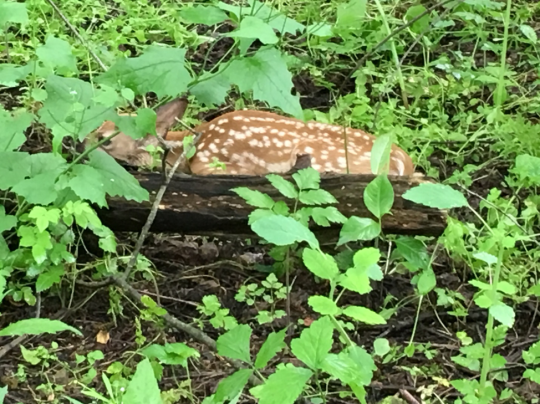
The fawn sighting was a bird-watching hike bonus. The days-old creature rested barely three feet off a Boyce Park hiking trail, motionless but fully awake, amidst rotting wood and spring green vegetation.
I quickly snapped a picture and moved along, confident a wary doe was just out of sight in the nearby tangle of spice bush and wild grapevine. Hours later, I found the image’s juxtaposition of two seemingly healthy young organisms could be interpreted as evidence of a forest’s ill health.
The plant partially concealing the fawn’s head is garlic mustard (Alliaria petiolata), an invasive species capable of proliferation into stands dense enough to choke out native understory plants and tree seedlings. Because white-tailed deer find garlic mustard unpalatable, the plan’s presence in the landscape results in higher, and often unsustainable browsing rates of native plants.
Patrick McShea works in the Education and Visitor Experience department of Carnegie Museum of Natural History. Museum employees are encouraged to blog about their unique experiences and knowledge gained from working at the museum.
